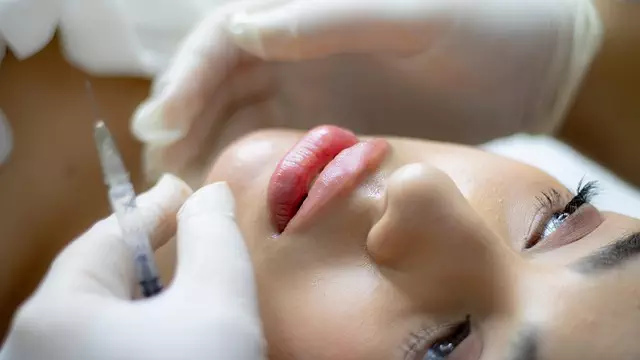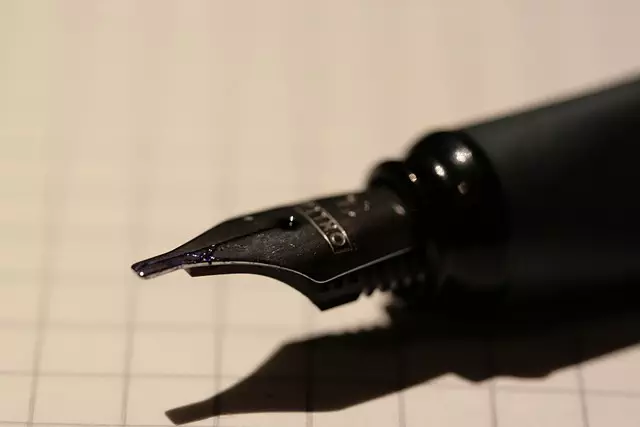This text compares Botox and dermal fillers as wrinkle reduction methods. Botox, derived from bacteria, relaxes muscles to smooth dynamic wrinkles for 3-6 months with minimal downtime. Dermal fillers add volume using substances like hyaluronic acid for immediate but temporary results (6 months to a year). Botox is preferred for subtle corrections and sustained results while dermal fillers offer more dramatic effects. Both treatments have unique advantages and should be chosen based on individual needs and desired outcomes, with consultation from a dermatologist recommended.
“Uncover the secrets to achieving youthful skin with a comprehensive guide on Botox and its competitive alternative, dermal fillers. Explore the science behind Botox’s wrinkle-smoothing capabilities and how it compares to dermal fillers in terms of effectiveness. Dive into the safety aspects, benefits, and patient selection criteria for both treatments. From procedure details to long-term results, this article provides an in-depth analysis, helping you decide between Botox vs dermal fillers for a more youthful appearance.”
Understanding Botox and its Mechanism of Action

Botox, a neurotoxin derived from the bacteria Clostridium botulinum, has gained popularity as a non-surgical cosmetic procedure for delaying wrinkles. Its mechanism of action involves blocking specific nerve signals that cause muscle contraction, thereby smoothing out facial lines and furrows. When injected into targeted areas, Botox prevents the release of acetylcholine, a neurotransmitter that stimulates muscle movement, leading to temporary paralysis of the treated muscles.
In contrast to dermal fillers, which add volume to the skin by injecting substances like hyaluronic acid, Botox works by weakening or relaxing muscles. This unique approach makes it particularly effective for dynamic wrinkles, those formed by frequent facial expressions such as frowning, squinting, or smiling. While dermal fillers offer immediate results, Botox provides a more subtle and gradual lifting effect, making it a preferred choice for individuals seeking a natural-looking enhancement that corrects specific wrinkle concerns.
Dermal Fillers: An Alternative Approach to Wrinkle Reduction

When considering wrinkle reduction options, both Botox and dermal fillers are popular choices in the aesthetics world. However, they offer distinct approaches to achieving smoother skin. Dermal fillers focus on plumping and lifting the skin by injecting a substance beneath the surface, typically to enhance volume loss associated with aging. This immediate result provides a more natural look and can last for several months, making it an attractive alternative for those seeking a temporary yet effective wrinkle solution. In contrast, Botox works by relaxing muscle activity in the treated area, preventing contraction and thus minimizing the appearance of lines and wrinkles. While it may not offer the same level of volume enhancement as fillers, Botox’s results are longer-lasting, typically lasting 3-6 months, making it a preferred choice for those desiring a more subtle yet prolonged effect.
Comparing Effectiveness: Botox vs Dermal Fillers

When considering treatments for delaying wrinkles, a common dilemma arises between choosing Botox or dermal fillers. Both have their merits and are popular choices in the aesthetic industry. However, understanding their distinct characteristics is crucial for making an informed decision.
Botox is a neurotoxin that relaxes muscles, preventing contraction and thus reducing dynamic wrinkle formation. It’s particularly effective for fine lines and crow’s feet around the eyes and mouth. On the other hand, dermal fillers enhance skin texture by adding volume and hydration, plumping up deep wrinkles and enhancing facial contours. Dermal fillers offer a more immediate result, making them appealing for those seeking quicker improvements. The effect of Botox, while subtler, lasts longer—typically 3-6 months—compared to dermal fillers which can last from 6 months to a year or more, depending on the type used. This longevity makes Botox a preferred choice for long-term wrinkle management.
Safety and Side Effects: A Comprehensive Look

Botox has established itself as a popular choice for anti-aging treatments, but it’s essential to understand its safety profile compared to other procedures like dermal fillers. One of the key advantages is its minimal invasive nature—a small needle delivers the toxin, causing minimal discomfort and leaving little to no visible scars. This makes it a safer option than some surgical procedures or more aggressive fillers.
While Botox is generally considered safe, there can be side effects, such as temporary bruising, swelling, or headaches at the injection site. In rare cases, patients may experience more severe reactions, but these are typically manageable and resolve within a few days. When comparing Botox to dermal fillers, it’s worth noting that fillers often have a longer-lasting effect, but they carry a slightly higher risk of complications, including infection and asymmetry. Botox, with its temporary effects, provides a more subtle and natural-looking result, making it appealing for those seeking to delay the appearance of wrinkles without drastic changes.
The Benefits of Using Botox for Delayed Wrinkle Formation

Botox has emerged as a popular and effective solution for delaying wrinkle formation, offering several advantages over other anti-aging treatments like dermal fillers. One of its key benefits is its ability to target specific muscle groups responsible for facial expressions that contribute to early wrinkling. By temporarily paralyzing these muscles, Botox smooths out fine lines and wrinkles, providing a more youthful appearance.
Unlike dermal fillers, which add volume and enhance specific areas, Botox takes a more nuanced approach. It focuses on preventing the formation of new wrinkles by relaxing the muscles that cause them. This makes it an ideal choice for individuals seeking subtle yet noticeable improvements, especially those who want to avoid a “filled” or artificial look. Moreover, Botox has a proven track record of safety and minimal downtime, making it a preferred option for many looking to combat aging signs without drastic measures.
Dermal Filler Applications and Their Unique Advantages

While Botox is renowned for its ability to smooth fine lines and wrinkles by relaxing facial muscles, dermal fillers offer a different approach. These injectable substances are designed to plump and enhance specific areas, providing immediate results in terms of volume restoration and a more youthful appearance. Unlike Botox, which primarily targets dynamic wrinkles caused by muscle movement, dermal fillers can be used to correct static wrinkles, add definition to facial contours, and even improve the overall balance of the face.
One of the unique advantages of dermal fillers is their versatility. They can be tailored to different skin types and needs. Some fillers are made from hyaluronic acid, a natural substance found in our bodies that attracts and retains moisture, ensuring long-lasting results. Others may contain collagen or synthetic materials, offering temporary yet dramatic effects. When considering Botox vs Dermal Fillers, it’s essential to discuss your specific concerns with a dermatologist who can advise on the most suitable treatment for achieving youthful-looking skin.
Patient Selection Criteria: Choosing the Right Treatment

When considering Botox or dermal fillers for wrinkle reduction, patient selection is crucial. The right treatment choice depends on several factors, including skin type, severity of wrinkles, and individual goals. Both Botox and dermal fillers have their unique advantages and indications.
Botox is particularly effective for dynamic wrinkles, those caused by facial expressions, such as frown lines between the eyebrows or crow’s feet at the corners of the eyes. It works by temporarily paralyzing muscles, reducing the appearance of these lines. On the other hand, dermal fillers are ideal for deeper, static wrinkles and volume loss. They add structure and hydration to the skin by filling in depressions, resulting in a smoother, more youthful complexion. Comparing Botox vs dermal fillers, the former is a great option for subtle corrections, while the latter offers more dramatic results.
Procedure Techniques, Cost, and Recovery Time

Botox treatments have become a popular choice for individuals seeking to minimize facial wrinkles and achieve a more youthful appearance. The procedure involves injecting botulinum toxin into specific muscle groups, temporarily paralyzing them and reducing the formation of dynamic lines. This is often compared to dermal fillers, another anti-aging treatment. Unlike fillers that add volume by filling in spaces with substances like hyaluronic acid, Botox works by relaxing muscles, preventing wrinkles from forming as much.
The cost of Botox treatments varies based on factors such as the area being treated, the number of units administered, and the location of the clinic. On average, a single session can range from $200 to $500 per area, with some areas like the forehead or around the eyes requiring higher doses, thus increasing the cost. Recovery time is relatively quick; patients may experience mild redness or swelling for a few hours after the treatment, but these side effects usually subside within a day. There is no downtime, allowing individuals to resume their normal activities immediately after the procedure. When considering Botox vs dermal fillers, many opt for Botox due to its non-invasive nature and temporary yet effective results in addressing dynamic wrinkles.
Long-term Results and Maintenance Strategies

The long-term effects of Botox on wrinkle reduction have been extensively studied, demonstrating its ability to provide up to 4-6 months of significant results. While this initial period offers visible improvements, maintaining the anti-aging benefits requires ongoing treatments for optimal longevity. This is where a strategic approach becomes crucial; patients often find success by scheduling regular appointments, typically every 3-4 months, to sustain the effects.
When considering Botox versus dermal fillers for wrinkle management, long-term planning plays a pivotal role. Fillers tend to provide immediate results and can last up to 2 years, but they may not offer the same level of muscle relaxation as Botox, which prevents dynamic wrinkling. For sustained anti-aging benefits, many patients opt for a combination approach, utilizing both treatments to address static and dynamic wrinkles effectively.
